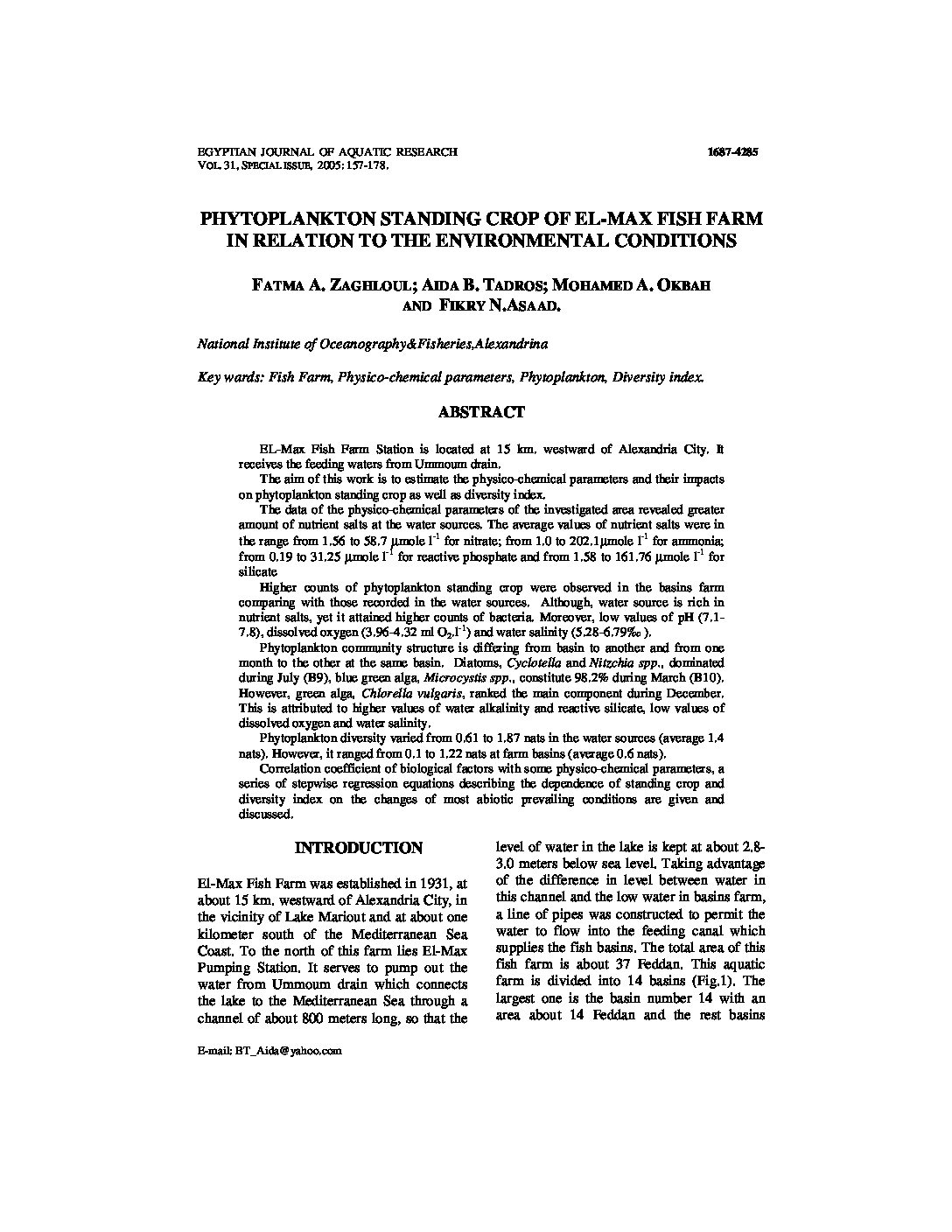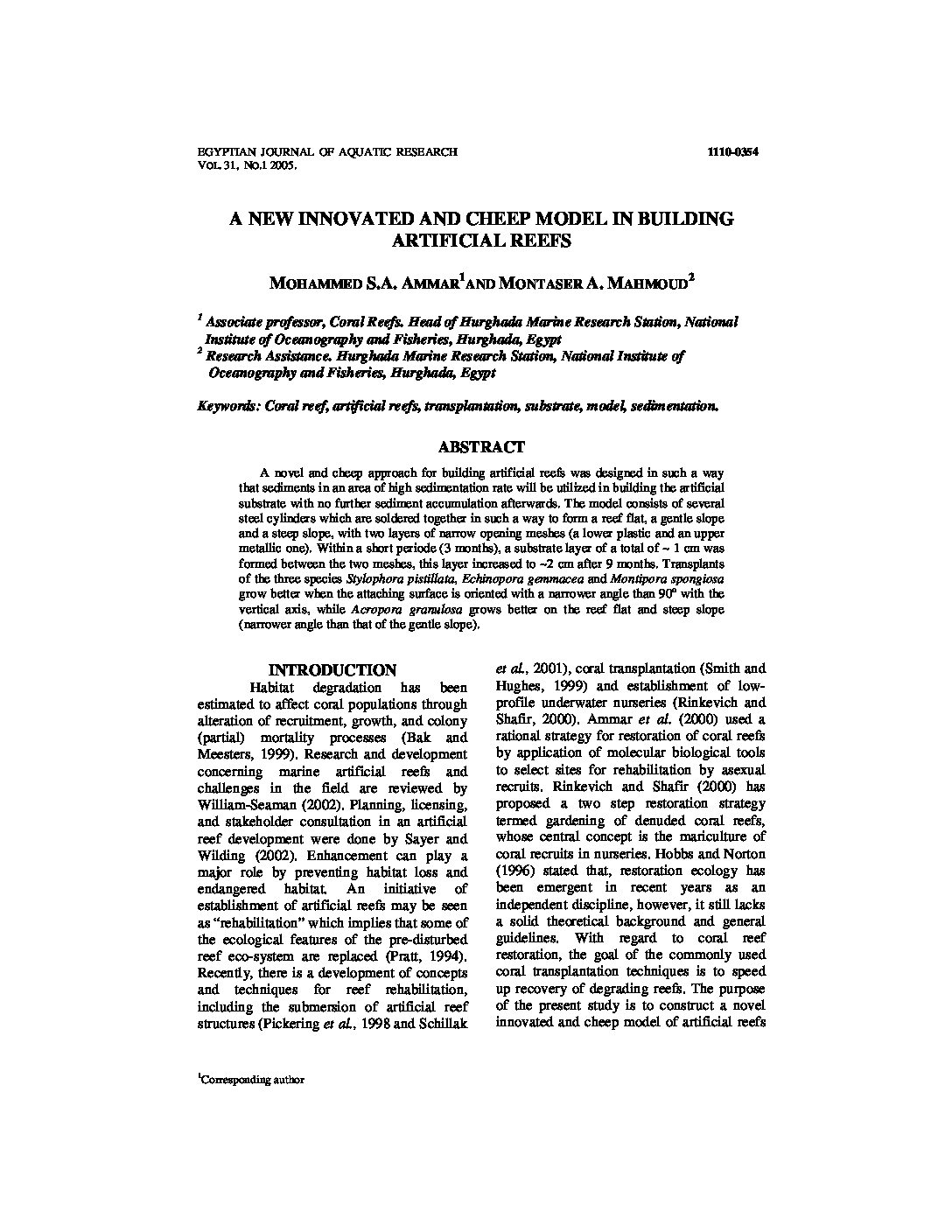Categories
vol-31PHYTOPLANKTON STANDING CROP OF EL-MAX FISH FARM
IN RELATION TO THE ENVIRONMENTAL CONDITIONS
FATMA A. ZAGHLOUL; AIDA B. TADROS; MOHAMED A. OKBAH
AND FIKRY N.ASAAD.
National Institute of Oceanography&Fisheries,Alexandrina
Key wards: Fish Farm, Physico-chemical parameters, Phytoplankton, Diversity index.
ABSTRACT
EL-Max Fish Farm Station is located at 15 km. westward of Alexandria City. It
receives the feeding waters from Ummoum drain.
The aim of this work is to estimate the physico-chemical parameters and their impacts
on phytoplankton standing crop as well as diversity index.
The data of the physico-chemical parameters of the investigated area revealed greater
amount of nutrient salts at the water sources. The average values of nutrient salts were in
the range from 1.56 to 58.7 µmole l
-1
for nitrate; from 1.0 to 202.1µmole l
-1
for ammonia;
from 0.19 to 31.25 µmole l
-1
for reactive phosphate and from 1.58 to 161.76 µmole l
-1
for
silicate
Higher counts of phytoplankton standing crop were observed in the basins farm
comparing with those recorded in the water sources. Although, water source is rich in
nutrient salts, yet it attained higher counts of bacteria. Moreover, low values of pH (7.1-
7.8), dissolved oxygen (3.96-4.32 ml O2
.l
-1
) and water salinity (5.28-6.79‰ ).
Phytoplankton community structure is differing from basin to another and from one
month to the other at the same basin. Diatoms, Cyclotella and Nitzchia spp., dominated
during July (B9), blue green alga, Microcystis spp., constitute 98.2% during March (B10).
However, green alga, Chlorella vulgaris, ranked the main component during December.
This is attributed to higher values of water alkalinity and reactive silicate, low values of
dissolved oxygen and water salinity.
Phytoplankton diversity varied from 0.61 to 1.87 nats in the water sources (average 1.4
nats). However, it ranged from 0.1 to 1.22 nats at farm basins (average 0.6 nats).
Correlation coefficient of biological factors with some physico-chemical parameters, a
series of stepwise regression equations describing the dependence of standing crop and
diversity index on the changes of most abiotic prevailing conditions are given and
discussed.







